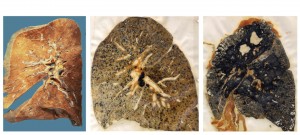Letter to Editor by Allan Tweddle, Charleston Gazette, February 25, 2021
The testimony last year to the Mine Safety and Health Administration from West Virginia coal miner Gary Hairston that, at age 48, he was diagnosed with incurable black lung due to coal dust exposure in his work, was heartbreaking, To me, an engineer whose entire career has been focused upon eliminating air pollution, it was also infuriating.
His condition at that age was so debilitating that he said that he could no longer even play with his grandchild or provide for his family.
As an 88 year old great grandfather still able to play with my great grandchildren, I must ask all West Virginians why Gary’s story, so similar to others repeated hundreds of times over the last 100 years, has been so acceptable for all this time?
Professionally, I bring to this discussion decades of experience as an engineer addressing and solving air pollution challenges. On many projects I was involved in reducing life-threatening air pollution to zero emissions. The only answer I would suggest in the case of the horrific conditions coal miners endure is greed by the mine owners, who deceived the candidates for mining jobs.
And according to the U.S. Centers for Disease Control, the percentage of miners being rendered vulnerable and diagnosed with black lung is currently increasing and is the highest seen in 25 years.
So, here we have the West Virginia Coal Association’s President Chris Hamilton, as reported in the Gazette-Mail, intervening in a potential coal fired plant closing case before the Public Service Commission of West Virginia. Hamilton says that “We want to protect all the good that plant represents.”
No discussion of the bad. And certainly no discussion of the health or good, clean job alternatives for coal miners. So who is he defending? It’s must only be the coal shareholders that have the most to lose. The displaced employees and the miners still able to work could be retrained and hired in other jobs, ones that are clean and safe, like those in renewable energy.
And the changing economics of power generation are not beneficial to coal. Quite simply, coal plants are no longer competitive. While Jon Amos is reported to cost $0.14 per kilowatt hour, solar power is coming in as low as $0.03. That’s an 80% lower cost. Why not bring that industry here? Have you ever asked yourself what percentage of costs of mining and burning coal are passed on to the shareholders and what percentage passed on to taxpayers?
And the truth about the real costs of coal are never reported. We taxpayers wind up paying for huge environmental damage costs — waste ponds, abandoned mines, contaminated water resources — that all should be charged to the coal industry. But for decades they have been able to lobby to get those costs passed onto the taxpayers.
In addition, the U.S. Department of Labor reports that job creation in solar energy is now the fastest of any sector. And those are clean safe jobs with a normal life expectancy in the mid 70s, much higher than that of the average underground coal miner, which in some regions is as low as 49.
West Virginia needs to join the national trend towards renewable energy not only because it will create clean, safe jobs for West Virginians but it will lower our utility rates. It’s well past the time to leave coal in the ground and embrace the lower cost clean renewable energy future. Because it’s already all around us and overdue to come here.
######………………######………………######
See also: Black Lung Disease Comes Storming Back in Coal Country Nadja Popovich, The New York Times, February 22, 2018
Across the coal belt in Kentucky, West Virginia, and Virginia, “there’s an unacceptably large number of younger miners who have end-stage disease and the only choice is to get a lung transplant or wait it out and die,” Dr. Blackley said.
Scientists have linked the new wave of lung disease to miners breathing in more silica dust, the likely result of a decades-long shift toward mining thinner coal seams that require cutting into the surrounding rock. Silica dust from pulverized rock can damage lungs faster than coal dust alone. Modern machinery, insufficient training for workers, and longer work hours may also contribute to increased dust exposure, experts say. (Tonnage quantities of fine silica sand are used in fracking for natural gas.)

